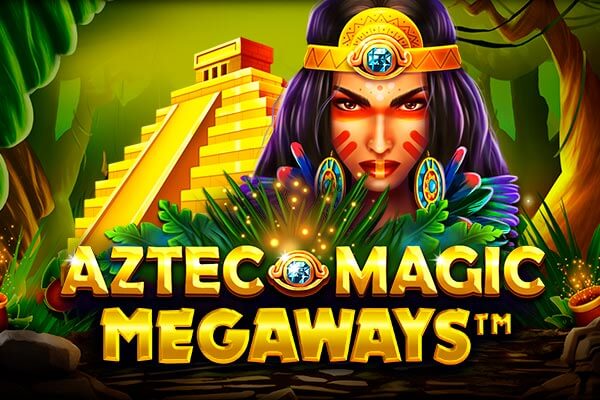Explore Bharat Ka Naksha: A Comprehensive Guide to India's Geography, Culture, and More
India, also known as Bharat, is a land of unparalleled diversity, rich history, and vibrant culture. Understanding the Bharat ka Naksha (India's map) is the first step to appreciating the nation's vastness and complexity. From the towering Himalayas in the north to the tropical beaches of the south, and from the arid deserts of the west to the lush green landscapes of the east, the Bharat ka Naksha reveals a tapestry of geographical wonders and cultural nuances. This guide will delve into the intricacies of the Bharat ka Naksha, exploring its physical features, cultural regions, historical significance, and contemporary relevance.
Unveiling the Physical Landscape of Bharat Ka Naksha
The Bharat ka Naksha showcases a remarkable range of physical features that have shaped the country's history and continue to influence its present. The mighty Himalayan range, often referred to as the "roof of the world," dominates the northern border, providing a natural barrier and a source of numerous rivers that sustain the fertile plains below. These rivers, including the Ganges, Indus, and Brahmaputra, are not only vital for agriculture but also hold immense religious and cultural significance.
The Indo-Gangetic plain, stretching across northern and eastern India, is one of the most fertile and densely populated regions in the world. This vast expanse is the heartland of Indian agriculture, supporting a large population and contributing significantly to the nation's economy. The Thar Desert, located in the western part of the country, presents a stark contrast to the fertile plains, with its arid landscape and unique ecosystem.
The Deccan Plateau, a large plateau region in southern India, is characterized by its diverse geological formations and rich mineral resources. The Western and Eastern Ghats, mountain ranges that flank the plateau, are biodiversity hotspots, home to a wide variety of flora and fauna. The coastal plains, stretching along the Arabian Sea and the Bay of Bengal, are important centers of trade and commerce, with numerous ports and fishing communities.
Key Geographical Features of Bharat Ka Naksha
- Himalayan Range: The highest mountain range in the world, influencing India's climate and water resources.
- Indo-Gangetic Plain: A fertile and densely populated plain, the heartland of Indian agriculture.
- Thar Desert: An arid landscape with unique flora and fauna, presenting a challenging environment.
- Deccan Plateau: A diverse plateau region rich in minerals and surrounded by the Western and Eastern Ghats.
- Coastal Plains: Important centers of trade and commerce along the Arabian Sea and the Bay of Bengal.
Exploring the Cultural Tapestry of Bharat Ka Naksha
The Bharat ka Naksha is not just a map of physical features; it is also a representation of India's diverse cultural landscape. The country is home to a multitude of languages, religions, customs, and traditions, each contributing to the rich tapestry of Indian culture. From the classical dance forms of Bharatanatyam and Kathak to the folk music and dances of various regions, India's cultural heritage is a source of pride and inspiration.
The Bharat ka Naksha reveals the distribution of different linguistic groups, with Hindi being the most widely spoken language, followed by Bengali, Marathi, Telugu, and Tamil. The country is also home to a variety of religions, including Hinduism, Islam, Christianity, Sikhism, Buddhism, and Jainism, each with its own unique beliefs and practices.
The cultural regions of India, as depicted on the Bharat ka Naksha, reflect the influence of geography, history, and social factors. The northern region is characterized by its Indo-Aryan culture, with influences from Central Asia and Persia. The southern region is known for its Dravidian culture, with its ancient languages and traditions. The eastern region is a melting pot of cultures, with influences from Southeast Asia and the Himalayas. The western region is known for its vibrant traditions and entrepreneurial spirit.
Cultural Regions of Bharat Ka Naksha
- Northern India: Influenced by Indo-Aryan culture, Central Asia, and Persia.
- Southern India: Known for its Dravidian culture and ancient traditions.
- Eastern India: A melting pot of cultures with influences from Southeast Asia and the Himalayas.
- Western India: Known for its vibrant traditions and entrepreneurial spirit.
- Central India: A region with a blend of cultures and traditions, often overlooked but rich in history.
Bharat Ka Naksha: A Journey Through History
The Bharat ka Naksha has evolved significantly over time, reflecting the changing political landscape and historical events. From the ancient Indus Valley Civilization to the Mauryan Empire, the Mughal Empire, and the British Raj, India has witnessed the rise and fall of numerous empires and kingdoms, each leaving its mark on the Bharat ka Naksha.
The partition of India in 1947 resulted in significant changes to the Bharat ka Naksha, with the creation of Pakistan and the redrawing of state boundaries. The integration of princely states into the Indian Union further shaped the political map of the country. In recent years, the creation of new states like Telangana and the reorganization of Jammu and Kashmir have led to further changes in the Bharat ka Naksha.
Understanding the historical context of the Bharat ka Naksha is essential for appreciating the country's present-day challenges and opportunities. The legacy of colonialism, the impact of partition, and the ongoing process of nation-building have all shaped the Bharat ka Naksha and continue to influence its future.
Historical Landmarks on Bharat Ka Naksha
- Indus Valley Civilization Sites: Representing one of the oldest urban civilizations in the world.
- Mauryan Empire Capitals: Signifying the expansion and consolidation of ancient India.
- Mughal Empire Centers: Reflecting the architectural and cultural achievements of the Mughal era.
- British Colonial Cities: Representing the influence of British rule on India's urban landscape.
- Sites of the Indian Independence Movement: Commemorating the struggle for freedom and the birth of a new nation.
Contemporary Relevance of Bharat Ka Naksha
The Bharat ka Naksha continues to be a vital tool for understanding India's present-day challenges and opportunities. It is used for planning infrastructure projects, managing natural resources, addressing environmental concerns, and promoting economic development. The Bharat ka Naksha also plays a crucial role in national security, disaster management, and social welfare programs.
The use of Geographic Information Systems (GIS) and satellite imagery has revolutionized the way the Bharat ka Naksha is created and utilized. These technologies allow for the creation of detailed and accurate maps that can be used for a wide range of applications, from urban planning to agricultural monitoring. The Bharat ka Naksha is also being used to promote tourism and cultural exchange, showcasing India's diverse attractions to the world.
In the digital age, the Bharat ka Naksha is readily accessible online, allowing people from all over the world to explore India's geography, culture, and history. Interactive maps, virtual tours, and online resources provide a wealth of information about the Bharat ka Naksha, making it easier than ever to learn about this fascinating country.
Applications of Bharat Ka Naksha in the 21st Century
- Infrastructure Planning: Designing and implementing transportation networks, energy grids, and communication systems.
- Natural Resource Management: Monitoring and managing water resources, forests, and mineral deposits.
- Environmental Conservation: Protecting biodiversity, mitigating climate change, and addressing pollution.
- Economic Development: Promoting tourism, attracting investment, and supporting agriculture and industry.
- National Security: Monitoring borders, managing internal security, and responding to threats.
- Disaster Management: Planning for and responding to natural disasters like floods, earthquakes, and cyclones.
- Social Welfare Programs: Identifying vulnerable populations, delivering services, and monitoring progress.
Conclusion: Appreciating the Significance of Bharat Ka Naksha
The Bharat ka Naksha is more than just a map; it is a window into India's soul. It reveals the country's physical beauty, cultural diversity, historical richness, and contemporary relevance. By understanding the Bharat ka Naksha, we can gain a deeper appreciation for the complexities and challenges facing India today, as well as its immense potential for the future. From students learning about their country to policymakers making critical decisions, the Bharat ka Naksha is an indispensable tool for navigating the Indian landscape. So, explore the Bharat ka Naksha, discover its hidden treasures, and embark on a journey of understanding and appreciation. The Bharat ka Naksha awaits your exploration.
This comprehensive guide aims to provide a thorough understanding of the Bharat ka Naksha, covering its physical features, cultural regions, historical significance, and contemporary relevance. It is hoped that this information will be valuable to anyone interested in learning more about India and its place in the world. The Bharat ka Naksha is a dynamic and ever-evolving entity, reflecting the changing realities of India and its people. By staying informed and engaged, we can all contribute to shaping the future of the Bharat ka Naksha.
Related Pages
- Bajaj Customer Care: Dial This Number & Get Instant Help!
- राजस्थान RAS परीक्षा: तैयारी, रणनीति और सफलता के मंत्र
- Ultrawin: Your Gateway to Winning Big in India! (Claim Your ₹10,000 Bonus!)
- हिना खान का ब्यूटी सीक्रेट: क्या है जो उन्हें इतना खास बनाता है?
- Badrinath: Unveiling Secrets + Must-Know Tips (2025 Guide)
Slots and Games

{{Games-kaz}}

Wilds of Fortune

Aztec Sun Hold and Win

Shake shake Leprechaun

The Princess & Dwarfs

Aloha King Elvis

Aztec Magic Megaways

Miss Cherry Fruits

Shake Shake Money Tree

Shark Spin